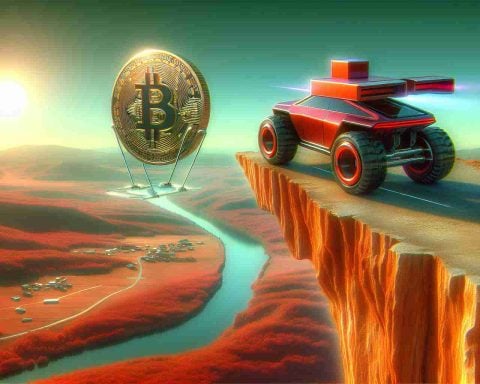Cryptocurrency enthusiasts are witnessing a fascinating development: Solana (SOL) is climbing the price charts, capturing widespread attention with its unprecedented performance. This blockchain platform, praised for its speed and scalability, is becoming a formidable contender in the digital currency arena.
At a time when numerous cryptocurrencies struggle to maintain stability, Solana’s ascent is energizing discussions about its potential. Observers note that this meteoric rise can be attributed to several key factors. First and foremost, Solana’s innovative technology allows it to process transactions swiftly and efficiently, a feature that appeals to both developers and investors.
Furthermore, Solana’s ecosystem continues to expand, with developers flocking to build decentralized applications on the network. This burgeoning growth further enhances the platform’s value proposition, making it an attractive investment for those seeking promising opportunities in the crypto space.
In addition, strategic partnerships with influential players in the industry have strengthened confidence in the blockchain’s future. These alliances not only validate Solana’s capabilities but also pave the way for potential collaborations that could bolster its market position.
As Solana (SOL)’s price continues to climb, analysts and investors alike are keeping a close watch, curious to see if this trend will persist. The crypto world is full of surprises, but Solana’s recent performance suggests it might be more than just a fleeting phenomenon. Whether you’re an investor or tech enthusiast, it’s a story worth following closely.
Could Solana’s Rise Be Signaling a New Frontier in the Crypto Universe?
Solana’s remarkable progress has not only intrigued investors but also opened a Pandora’s box of possibilities and challenges for individuals, communities, and entire nations. But what are the untold impacts and controversies surrounding Solana’s burgeoning presence in the cryptocurrency market?
Impact on Communities and Markets
On the positive side, Solana’s impressive scalability and speed have nurtured an environment ripe for innovation. Developers are empowered to create groundbreaking decentralized applications (dApps), which can transform industries ranging from finance to digital art. This growth can boost local economies, as more jobs and skills are required to support these new technologies. For developing countries, in particular, Solana offers a chance to leapfrog technological gaps and directly embrace the advantages of blockchain technology.
In terms of market impact, Solana’s success has created a rising tide that lifts all boats. A surge in interest for Solana has led to increased educational resources and blockchain-related events, spawning a curious and engaged global community. Entire ecosystems revolving around Solana, such as NFT platforms and DeFi protocols, offer both economic benefits and new forms of community governance.
Controversies and Concerns
Despite its advantages, Solana is not without its criticisms. One of the most pressing controversies is its level of decentralization. Critics argue that Solana’s centralization could inhibit its long-term stability and security. Is Solana truly decentralized enough to withstand systemic threats, or does its structure inherently favor certain stakeholders?
Another point of contention is Solana’s environmental impact. While it boasts greater energy efficiency compared to, say, Bitcoin, the exponential growth of its network raises questions about its sustainability. How can Solana maintain its low energy footprint as its adoption skyrockets?
Advantages and Disadvantages
Let’s delve deeper into the pros and cons:
– Advantages: Solana’s unmatched transaction speeds and low fees make it a leader in scalability, attracting developers and users alike. Additionally, its thriving ecosystem and robust partnerships set the stage for sustained growth and innovation.
– Disadvantages: Centralization concerns could pose risks, as fewer nodes may lead to vulnerability. The rapid pace of development could also lead to hasty decisions, affecting tech reliability. Lastly, there’s the environmental question; although more sustainable than some alternatives, the scalability success could compromise eco-efficiency.
What Does This Mean for the Future?
As Solana continues to grow, the crypto industry observes with bated breath: could Solana redefine what a blockchain can achieve? The implications extend beyond mere technology into socio-economic transformations, reshaping how trust and value are constructed in digital communities.
For those interested in exploring more about cryptocurrencies and the evolving landscape, visit CoinDesk and Cointelegraph.
The Solana saga is far from over, bringing both promise and pitfalls. As with all things in the crypto world, it pays to be informed, critical, and ready for the next wave of Digital Revolution.
















